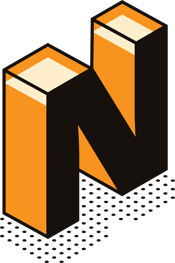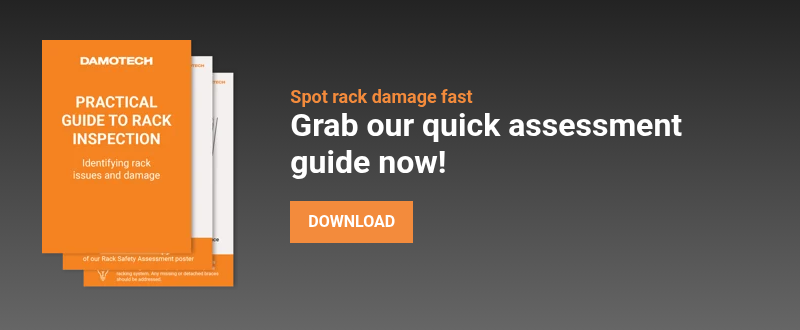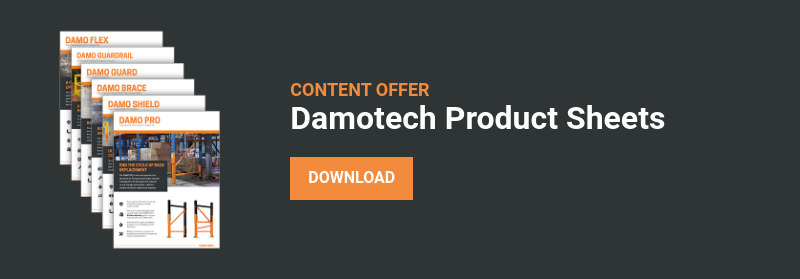L
Load: Make sure the load capacity of your racking system is known, up-to-date, and respected. The max load capacity should be communicated to forklift operators to prevent them from overloading the racks.
M
Maintenance program: Lots of companies have maintenance programs for the inspection and repair of their moving equipment, and we recommend the same for your racking systems. Whether it's to inspect for damages, tighten loose anchors or to add missing safety pins, all these actions will keep your racks safe and in good condition.

N
Netting: Safety netting and steel mesh decking are containment systems that help prevent the fall of objects and loads from the rack.
O
Out-of-Plumb: Are your rack uprights straight or are they leaning down-aisle or cross-aisle, meaning out-of-plumb? If it's the case, you will have to address the problem to avoid any issues or incidents.
P
Protection equipment: Installing protection equipment such as column guards and pallet stoppers can easily prevent rack damages.
Q
Qualified: It's safer to work with a qualified rack engineer, whether it's for rack design, installation or inspection. Their experience and knowledge are invaluable, as they must continuously stay up-to-date with industry developments and standards.
R
Report, Repair or Replace: Employees should report all incidents or damage caused to components, especially those damages that present a high risk for the safety and stability of the warehouse rack system. They should then be scheduled for repair or replacement.
S
Safety pins: Safety pins are small, but essential safety devices used to prevent beams from dislodging. Make sure they are in place.
T
Training: Train your employees on how to recognize and report rack damage. It's a great way to increase the safety of their workplace.
U
Unload: When a damaged rack presents a significant risk of collapsing, or you are unsure of its severity, you must unload the racking system.

V
Visibility: Having excellent visibility in your warehouse and aisles is necessary to operate adequately and in a safe matter. Adequate lighting and unencumbered aisles will help in observing and reporting all potential issues.
W
Wire mesh: Wire mesh is one of many fall prevention accessories available. Fall protection is a must over passageways or in rack tunnels, and it's a great solution to avoid injuries and damage caused by falling objects.
X
X-mark: Identifying or flagging observed damage is recommended, especially for the more critical ones. Whether you mark the damaged frame with an X, stick a label on the column or spray it with bright paint, it will allow everyone to pay attention to it. Monitor the condition to make sure it doesn't deteriorate and identify locations in need of repair or replacement.
Y
Yellow: yellow and orange are standard safety colors used in protective equipment such as safety guards, bollards and building column protectors. The pedestrian crossings in the warehouse are often white or yellow to indicate the safe path to be followed by employees.
Z
Zero incident objective! Last but not least: all the different preventive and protective measures you are putting in place will ensure the health and safety of the workers and help avoid incidents and damages, so you have zero injuries.










